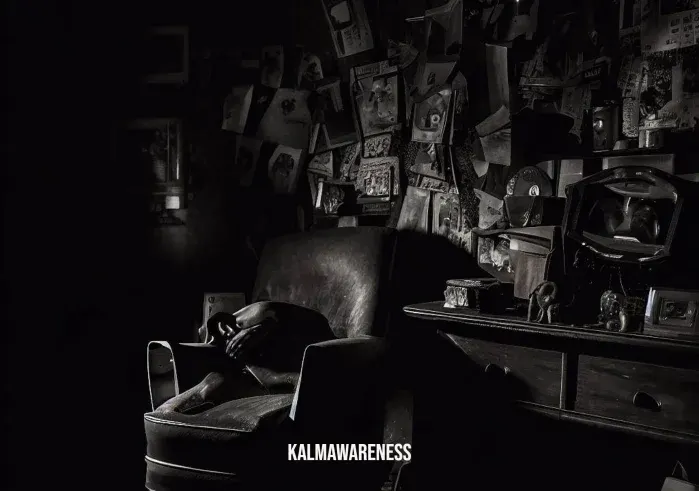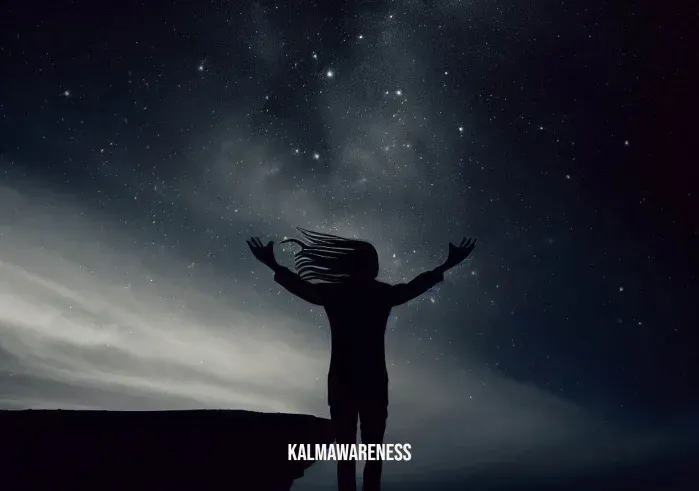Who Said “Grief is Love with Nowhere to Go?” – Exploring the Nexus of Love and Loss
Grief is a universal emotion that transcends cultures, religions, and geographic boundaries. It’s an experience shared by all humans, a price we pay for the deep emotional connections we form. A sentiment that resonates deeply with many people is, “Grief is love with nowhere to go.” But who said grief is love with nowhere to go? Let’s journey into the heart of this poignant expression, exploring its origins and how it offers insight into our experiences of grief and love.
Tracing the Origins: Who First Voiced This Thought-Provoking Phrase?
It’s not entirely clear who first uttered the phrase “Grief is love with nowhere to go.” Its origins are as intricate and elusive as the emotion it so elegantly captures. Despite the mystery shrouding its beginnings, this quote provides solace to many navigating the labyrinth of grief, providing a new perspective on the deep sadness that accompanies loss.
“Grief is love with nowhere to go.”
This statement reminds us of the interconnectedness of love and grief. It suggests that our grief is merely a reflection of the depth of our love. For, without love, there would be no grief.
A mindful approach towards healing helps us understand this connection better. Mindfulness enables us to observe our emotions without judgment, providing an opportunity to understand the intricate link between love and grief.
Grief, Love, and the Human Heart
The human heart is capable of profound love, and with love often comes the inevitable grief of loss. This connection between love, loss, and grief becomes clear when we take a look at a simple human heart. Our hearts are capable of great love, and hence, deep sorrow.
For some, the concept of grief being an extension of love may seem contradictory. However, with deeper introspection, the realization dawns – the rawness of grief stems from the purity of our love. Grief, in essence, is love in its most vulnerable state. Exploring the notion of the vulnerable man can shed further light on this concept.
Navigating Grief: Finding a Path through Meditation and Mindfulness
Many people find solace and healing in various practices, including meditation. Engaging in a guided meditation for heartbreak or trying a meditation for healing a broken heart can help channel the love that feels lost, transforming it into a source of comfort and strength.
Mindfulness too plays an integral role in managing grief. The practice of embracing mindfulness during times of grief helps us stay anchored in the present moment, alleviating the overwhelming nature of loss and the resulting feelings of being adrift.
Understanding Grief through Quotes
Quotes can be powerful tools in understanding our emotions. They offer words when we struggle to express our feelings. In the realm of grief and loss, many find solace in poignant sayings and quotes. You can explore a collection of thought-provoking walking meditation quotes, bad headspace quotes, or even quotes about blame shifting to gain insights into your grief journey.
As we journey through this article, we hope to enlighten you on the intricate relationship between grief, love, and loss. Join us in the next part where we delve deeper into the quote, “Grief is love with nowhere to go,” examining its implications on our daily life and personal growth. We will discuss how to navigate grief mindfully, channel it through meditation, and find solace in meaningful quotes. Continue to the next part of this article to explore more.
Remember, you are not alone in your grief. As you walk this path, know that your grief is a testament to your love. It is not something to be rushed or dismissed, but honored and understood.

Interpreting the Phrase: Decoding “Grief is Love with Nowhere to Go”
In the exploration of the powerful sentiment, “Grief is love with nowhere to go,” it becomes apparent that this phrase is more than just a poignant expression. It reflects a deep understanding of human emotions, mirroring the complex interplay between love, loss, and grief. But what does it truly mean?
To comprehend its profound significance, let’s break down this insightful phrase into its elemental parts.
Grief is an intense emotional response to loss, a universal experience that touches all human beings at some point. Despite its universality, each individual’s journey with grief is unique. This uniqueness is beautifully encapsulated in our grief mantra.
Love, on the other hand, is an emotion that ignites our lives, provides joy, and fosters connections. The depth of our love often determines the intensity of our grief, as explored in our discussion on the connection between love and meditation.
The term Nowhere to Go implies a sense of being stuck, a sentiment that grief often induces. It may feel like an inescapable void, akin to the emptiness described in the poem If roses grow in heaven.
Collectively, the phrase suggests that our grief is a testament to our deep-seated love, which, in the face of loss, feels stranded, seeking an outlet.
The Faces of Grief: Understanding Different Grief Responses
Grief doesn’t come in a one-size-fits-all package; it manifests differently for everyone. Understanding these different responses can help individuals coping with grief and those around them better navigate the tumultuous journey. Below is a table summarizing some common responses to grief and strategies for dealing with them.
| Grief Response | Description | Coping Strategy |
|---|---|---|
| Shock | A state of disbelief and numbness | Mindful breathing exercises like pink meditation |
| Anger | Frustration and resentment | Calming practices like calm heart meditation |
| Despair | Intense sadness and hopelessness | Meditations for healing a broken heart |
| Fear | Anxiety about the future | Guided meditation for heartbreak |
| Acceptance | Acknowledging the reality of the loss | Embrace caring about me practices |
Grief Through the Lens of Meditation: A Path to Healing
Meditation is a powerful tool that can guide us through the whirlpool of emotions that grief stirs up. It offers a space for introspection, for experiencing our feelings without judgement, and for channeling our love in a new direction.
A specific form of meditation designed for coping with loss is hospice chaplain meditation. This form of meditation not only helps individuals process their grief but also aids in accepting and understanding death, a necessary step in the healing process.
Self-Care in the Midst of Grief: Loving Yourself Through the Journey
Grief can be physically and emotionally draining. During this challenging period, it’s essential to practice self-care. To quote from our collection of self-care daily reminders, “Self-care is how you take your power back.”
The importance of self-love and care cannot be overstated when navigating the tumultuous journey of grief. Incorporating practices such as body image meditation or body positive meditation can help in maintaining a positive self-image, contributing to the healing process.
The phrase “Grief is love with nowhere to go” is a powerful testament to the human capacity to love and to grieve. In the next part of this article, we will delve further into practical strategies for managing grief and how to channel the power of love towards healing. We’ll also explore how various forms of meditation can support you during this time. Stay tuned for a profound discussion on transforming grief into a catalyst for personal growth and self-discovery.

Transforming Grief into Personal Growth: The Silver Lining
A deep exploration of the adage, “Grief is love with nowhere to go,” uncovers a potential pathway to personal growth hidden within the folds of our pain. Grief is not merely a painful experience, but also a transformative one. The intensity of our love, represented as grief, can be channeled towards positive changes in our life, pushing us towards unprecedented personal growth.
Grief and Personal Growth: An Unlikely Alliance
Through the process of grieving, we come face to face with our most vulnerable selves. Embracing this vulnerability, as discussed in The Vulnerable Man, opens doors to immense personal growth. It allows us to delve deep into our emotions, fostering self-awareness and resilience, both crucial elements of personal development.
To borrow the words of renowned author Brené Brown, “Vulnerability sounds like truth and feels like courage. Truth and courage aren’t always comfortable, but they’re never weakness.” In this light, our grief, stemming from profound love, can be viewed as a testament to our strength, a stepping stone towards personal growth.
The Role of Mindfulness in Grief and Personal Growth
Mindfulness, the practice of being fully present and accepting of our experiences, plays a crucial role in navigating grief and fostering personal growth. It allows us to experience our grief without judgement, encouraging acceptance and fostering resilience.
Practicing embracing mindfulness during periods of grief can lead to profound personal growth. By remaining present in our pain, we are offered an opportunity to learn about ourselves, cultivate resilience, and strengthen our emotional intelligence, all of which are pillars of personal development.
Grief as a Catalyst for Self-Discovery
By looking inward during our grief, we are offered a chance to discover ourselves at a deeper level. This can lead to surprising revelations about our desires, values, and potential. As expressed in quotes for personal growth, “What lies behind us and what lies before us are tiny matters compared to what lies within us.”
Through the pain of grief, we are often able to tap into the depths of our character, uncovering strengths and capacities we didn’t know we possessed. This journey of self-discovery catalyzed by grief can set us on a path towards personal growth and transformation.
Channeling Grief Towards Love and Healing
Despite the raw pain it causes, grief opens up a pathway to immense love and healing. It’s akin to what we experience in a guided meditation for heartbreak, where the very act of diving into our pain leads us towards healing and growth.
Our grief, a product of intense love, can be channeled into acts of love towards ourselves and others, a practice central to radical loving care. By offering ourselves compassion and care in our darkest moments, we not only heal but grow.
The concept of “grief is love with nowhere to go” is not only a testament to our capacity for love, but also an invitation to growth and self-discovery in the face of loss. The next part of this article will explore further strategies for managing grief, and how the power of love can be channeled towards healing and growth. We’ll delve deeper into different forms of meditation, mindfulness practices, and how to foster personal growth during challenging times. Stay tuned for more insights and wisdom.

The Healing Power of Grief – Fostering Hope and Confidence
This exploration of “grief is love with nowhere to go” has underscored its transformative potential. We’ve seen how grief can open pathways to personal growth and self-discovery. In this next section, we will delve into the healing aspects of grief and how it can foster hope and confidence.
Embracing Negative Emotions: The Key to Healing and Growth
We often tend to suppress or escape from our negative emotions. However, embracing these emotions is crucial for healing and growth. Is curious an emotion? The curiosity to explore our negative feelings can lead to unexpected self-awareness and resilience.
Renowned psychologist Carl Jung once said, “One does not become enlightened by imagining figures of light, but by making the darkness conscious.” This quote resonates deeply with those dealing with grief, emphasizing the need to explore our pain fully for profound personal growth.
The Intersection of Grief and Self-Love
Grief forces us to confront our deepest sorrows, and through this process, we learn the importance of self-love and care. The practice of self-care is how you take your power back from the all-encompassing grief.
“You yourself, as much as anybody in the entire universe, deserve your love and affection.” – Buddha
This quote is a gentle reminder that our love, which manifests as grief, deserves to be channeled towards our well-being, cultivating self-love, and personal growth.
Healing Through Mindful Meditations
One effective way of navigating grief and fostering personal growth is through mindful meditations. A sleep meditation for self-love, for instance, can serve as a soothing balm for our pain, providing us with the rest and tranquility we need to heal and grow.
Fostering Hope and Confidence Amid Grief
Hope and confidence are pivotal in our journey through grief towards healing and growth. Here, the power of quotes that inspire hope and confidence can play a significant role. Below is a table showcasing some of these powerful quotes, along with the underlying message and their application in our journey through grief.
| Quote | Underlying Message | Application in Grief |
|---|---|---|
| “The wound is the place where the Light enters you.” – Rumi | Pain can lead to enlightenment | Grief can guide us towards self-discovery and personal growth |
| “This too shall pass.” – Persian Sufi Poets | Change is inevitable | Even the pain of grief will fade over time, leading to healing |
| “No winter lasts forever; no spring skips its turn.” – Hal Borland | Hope and renewal follow despair | After the harsh winter of grief comes the spring of healing and growth |
| “Believe you can and you’re halfway there.” – Theodore Roosevelt | Self-belief is empowering | Believing in our capacity to heal and grow is vital in navigating grief |
| “Out of suffering have emerged the strongest souls; the most massive characters are seared with scars.” – Kahlil Gibran | Pain shapes strength | Our grief, a result of profound love, can make us stronger and catalyze personal growth |
In the upcoming chapter, we will explore more about the transformative power of grief, including practical strategies for managing grief, exercises for mindfulness, and how our deep reservoir of love can be directed towards healing and personal growth. Stay tuned for a deeper understanding and further insights into the phrase, “grief is love with nowhere to go.”

Shaping a Path Forward – Navigating Grief Mindfully
Moving forward in our exploration of “who said grief is love with nowhere to go”, let’s delve into practical strategies to navigate this journey. We have traversed the terrains of understanding grief, its transformative potential, and the healing aspects. Now, let’s look into mindfulness, mediation, and personal growth aspects that can serve as aids in our journey through grief.
Walking Through Grief – The Role of Mindfulness
Mindfulness is being present in the moment, paying attention to our thoughts and feelings without judgement. This practice can be particularly helpful when dealing with grief. It fosters an understanding of our emotions and helps us to process them in a healthy way.
A famous Zen proverb goes, “When walking, walk. When eating, eat.” This simple yet profound statement sheds light on mindfulness – a state of active, open attention on the present. Mindfulness can provide the solace we seek, and walking meditation quotes can inspire us on this path.
Body Positivity and Healing
As we navigate grief, it’s crucial not to neglect our physical well-being. Embracing body positivity can facilitate healing by nurturing a healthy relationship with our bodies. Celebrating our bodies as they are, we anchor ourselves in the present moment, a core principle of mindfulness.
The Art of Mindful Breathing
Mindful breathing is a fundamental step towards cultivating mindfulness. Focusing our attention on our breath brings us back to the present moment, where healing happens. It is through our breath that we can connect with our bodies and our grief, facilitating a gentle acceptance of our emotions. This forms a significant part of couple meditating, fostering shared mindfulness and mutual healing.
Cultivating Self-Care
“Caring for myself is not self-indulgence, it is self-preservation, and that is an act of political warfare.” – Audre Lorde
This quote underscores the importance of self-care, a critical component of navigating grief. During times of loss, self-care can range from simple acts like getting enough sleep, eating healthily, to more involved practices like 5-minute self-love meditation.
Practices for Navigating Grief
- Recognizing and accepting your grief: This is the first step in navigating through grief. The journey of grief is unique for everyone, and recognizing your individual path is crucial.
- Practice mindfulness: As discussed earlier, mindfulness can be a potent tool in processing grief. From embracing mindfulness to mindful breathing, these practices can significantly facilitate your journey through grief.
- Exercise self-care: This is about taking care of your physical, mental, and emotional well-being. Regular self-care routines can provide you with the strength needed to move through grief.
- Connect with others: Reach out to others who understand your experience. Support groups can provide a space to share feelings and experiences, fostering mutual healing.
- Seek professional help if needed: If your grief feels too overwhelming to manage on your own, don’t hesitate to seek professional help. Therapists and counselors trained in grief management can provide valuable support.
In our final chapter, we will be diving deeper into the transformative power of grief. Exploring further on how grief, a manifestation of love, can be a gateway to profound personal growth, resilience, and strength. Stay tuned to delve deeper into the profound insight that “grief is love with nowhere to go.”

Light at the End of the Tunnel – Harnessing the Transformative Power of Grief
As we embark on the concluding chapter of our exploration into understanding “who said grief is love with nowhere to go”, we must highlight the importance of light. Not only as a metaphor for hope but also as a symbol of growth and transformation that can emerge from grief. In this final chapter, let’s unfold how we can harness this transformative power and allow it to shape us, guiding us towards a more enriched life.
The Transformation: Grief to Growth
It might be hard to imagine during the darkest hours, but grief can also serve as a catalyst for personal growth. A butterfly emerging from a cocoon is a beautiful metaphor for this transformative process. The butterfly, once a caterpillar, goes through an intense period of darkness and change before finally emerging stronger and more beautiful. Like this, we too can use our grief as a tool for transformation.
Kahlil Gibran, a poet known for his insightful words, has a poignant quote that reminds us of this transformative power. He said, “Out of suffering have emerged the strongest souls; the most massive characters are seared with scars.” Reading through the collection of Kahlil Gibran quotes can be both enlightening and comforting during our journey through grief.
Expressing Grief: The Artistic Outlet
Art, in its various forms, can provide an outlet for our grief, transforming it into something tangible. This is not just about professional artists; anyone can find solace in artistic expression. Whether it’s painting, writing, dancing, or even cooking, expressing grief through creativity can be a powerful healing tool. The process of creating art helps us externalize and manage our feelings, making them easier to comprehend.
Exploring the benefits of art therapy can provide us with insights into how art can act as a healing balm on our grieving hearts.
The Guiding Light: Wisdom from Spiritual Traditions
Various spiritual traditions around the world offer wisdom that can help us navigate our grief. For example, Buddhism teaches us about the impermanence of life, thereby equipping us to handle loss in a healthy way. This wisdom doesn’t eliminate the pain of loss but can provide us with a framework to understand and process our grief.
The Native American Proverb, “Grief never ends, but it changes. It’s a passage, not a place to stay. Grief is not a sign of weakness, nor a lack of faith. It is the price of love.” offers profound wisdom that resonates with our exploration of “grief is love with nowhere to go.”
Moving Forward: Transforming Grief into Action
Grief can be channelized into actions that honor our lost loved ones and help us heal. This can involve advocating for a cause that was close to their heart, creating something in their memory, or even just continuing to live our lives in a way that would make them proud.
This way of navigating grief can be empowering, allowing us to transform our grief into a force for good. This transformative aspect is beautifully captured in the quotes about moving forward that offer inspiration for those traversing this journey.
As we conclude, it’s crucial to remember that grief, a testament to our love, can indeed be transformative. As we navigate through it, let’s remember to be patient with ourselves, to allow our grief to shape us, and to harness its transformative power.
Thank you for joining us in this exploration of “who said grief is love with nowhere to go.” It is our hope that our journey through this topic has provided you with comfort, insights, and resources to navigate your own journey through grief. We look forward to welcoming you back in our future articles and magazine issues, where we continue to explore profound topics like these.

Turning a New Leaf – The Upside of Grief
Welcome to the concluding chapter of our discourse, where we delve deeper into the profound idea that “grief is love with nowhere to go.” As we uncover new dimensions, we aim to shed light on the transformative power of grief. Let’s illuminate the path of resilience and growth, focusing on the upside of this profound human experience.
Grief as a Gateway to Personal Transformation
It is often in the crucible of our deepest sorrows that the contours of our character are honed. The grief we experience can usher in an era of unprecedented personal transformation. Just as a lump of coal undergoes pressure to emerge as a diamond, so too can our grief morph us into stronger, more empathetic beings.
When mired in grief, we find solace in the words of Friedrich Nietzsche, “To live is to suffer, to survive is to find some meaning in the suffering.” Discover more of Nietzsche’s pearls of wisdom that encapsulate the transformative power of grief in our compilation of Nietzsche’s philosophies.
Channeling Grief into Creative Expression
Art, in its myriad forms, can serve as a conduit for expressing grief, lending it a tangible form. This isn’t restricted to professional artists; anyone can find an outlet in creative expression. Writing, painting, music, or any form of art can act as an emotional salve, helping us to navigate the murky waters of grief.
Interested in understanding how art aids healing? Take a look at our insightful article on Art and Healing.
Enlightening Wisdom from Global Spiritual Traditions
Numerous spiritual traditions worldwide offer profound wisdom to aid our navigation through grief. For instance, Buddhism espouses the concept of life’s impermanence, thereby equipping us to accept and process loss. This understanding doesn’t erase the sting of loss but provides a philosophical framework to make sense of our grief.
The Persian poet, Rumi, offers a timeless piece of wisdom, “Grief can be the garden of compassion.” Delve deeper into these life-affirming teachings in our collection of Rumi’s quotes.
Grief as a Catalyst for Positive Action
Our grief can be transformed into meaningful action that keeps the memory of our lost loved ones alive. This can take many forms, such as championing a cause dear to them, creating a tribute in their memory, or living in a way that honors their values and aspirations.
This perspective on grief is both empowering and transformative, allowing us to convert our sorrow into a force for positive change. You may find inspiration in our collection of quotes on resilience and hope.
As we draw the curtain on our exploration of “who said grief is love with nowhere to go,” it’s crucial to remember that grief, while painful, can lead to growth and transformation. Throughout this journey, let’s remember to be kind to ourselves, allowing grief to shape us rather than define us.
We hope that our discourse has provided some comfort, new perspectives, and resources to help you navigate the journey through grief. We look forward to welcoming you back in our future Philominded issues, where we continue to illuminate the human experience’s varied facets. Your engagement fuels our commitment to explore and understand more deeply. Thank you for accompanying us on this journey.





